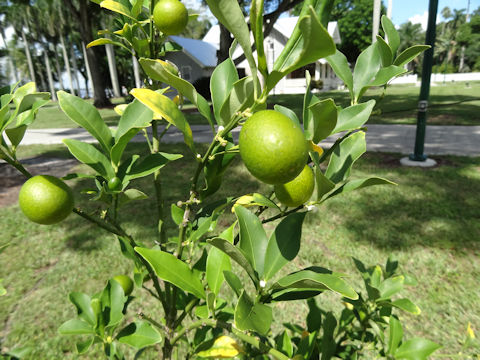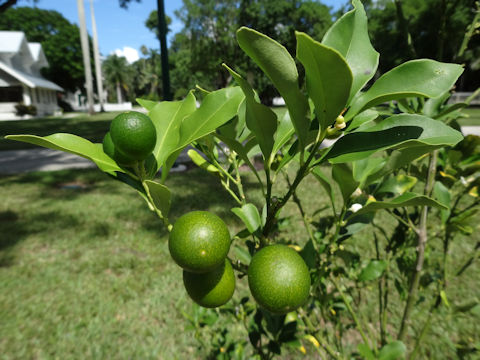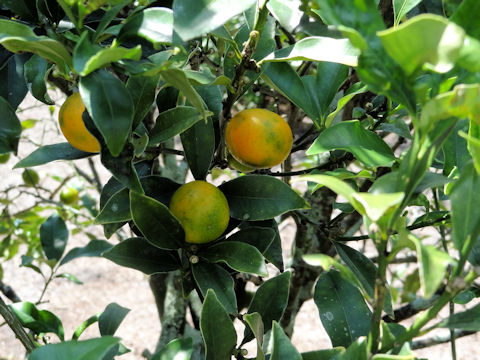|
|
|
|
[Index]
[Back] |
    |
|
|
|
中国が原産です。わが国へは江戸時代の末期(1826年)に、中国の浙江省寧波から渡来しました。この樹木の高さは3〜6メートルになります。長金柑と同様に、寧波金柑の木は冬には半休眠状態にあり、氷点下の気温にも耐えられます。開花期は夏で、果物は冬の終わりに成熟します。ほぼ円形の果実は成熟時にはオレンジ色になり、直径は4センチまでです。甘い果皮は長金柑よりも太く、甘いように見えます。果肉は淡いオレンジ色で、種子がいくつか含まれており、酸っぱいです。 果物は、最も甘い部分であることが多い果皮を含めて、生色できます。それらをスライスしてレタスやフルーツサラダに追加したり、飲料に風味を付けたり、ジャムやゼリーを作るために使用します。別名で、「にんぽうきんかん(寧波金柑)」とか「めいわきんかん(明和金柑)」とも呼ばれます。 |
|
|
ミカン科ミカン属の常緑低木で、学名は Fortunella crassifolia。英名は Meiwa kumquat。 |
|
|
The Meiwa kumquat (Fortunella crassifolia) belongs to Rutaceae (the Citrus family). It is a small evergreen tree that is native to China. It was introduced into Japan at the last years at the Edo period (1826) from Ningbo, Zhejiang in China. This tree grows up 3-6 m in height. As with "Naga kumquat" (Oval kumquat), Meiwa kumquat trees are semi-dormant in winter, allowing them to withstand temperatures below freezing. The flowering season is in summer, and the fruits mature in late winter. The almost-round fruits are orange at maturity, up to 4 cm in diameter. The sweet rind is thicker than the rind of Naga kumquat, making it seem sweeter than Naga kumquat. The flesh is light orange, contains a few seeds, and is acidic. The fruit can be eaten fresh, including the rind which is often the sweetest part. Slice them to add to lettuce or fruit salads, for flavoring beverages, or use to make jams and jellies. |
|
|
[上・中1〜2] アメリカ・フロリダ州「エジソン&フォード・ウィンターエステート」にて、2011年09月28日撮影。(photo by Jon Suehiro) [下] アメリカ・フロリダ州オーランド市「ハリーP.ルーガーデン」にて、2012年09月23日撮影。(photo by Jon Suehiro) |
|
|
|
Shu Suehiro |